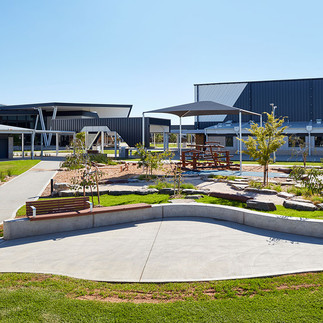Australia's commitment to achieving net-zero emissions by 2050 places the building sector at the forefront of the nation’s carbon reduction journey. As buildings account for nearly a quarter of global energy-related emissions, the financial and operational strategies implemented in building services are pivotal. This feature explores the financial implications of carbon reduction strategies, the role of government policies, and emerging trends in sustainable building practices.
Australia’s Commitment to Net Zero
In line with the Paris Agreement, Australia aims to achieve net-zero emissions by 2050. This ambition requires profound transformations across all sectors, particularly in building services, where energy efficiency and carbon management are critical. Strategies such as retrofitting existing infrastructure, leveraging renewable energy sources, and implementing energy-efficient technologies are essential for meeting these goals.
Government initiatives, such as carbon pricing mechanisms, subsidies for green technologies, and regulatory mandates, are shaping the financial landscape for stakeholders in the building sector. These measures aim to balance upfront capital costs with long-term operational savings and sustainability benefits.
Financial Implications of Carbon Reduction
The financial considerations of adopting sustainable building services are multifaceted:
Carbon Pricing and Penalties
Carbon pricing schemes, whether through direct taxation or emissions trading systems, incentivise organizations to reduce their carbon footprints. For instance, businesses operating under stringent carbon budgets may face financial penalties if emissions exceed allowable limits.
Incentives for Sustainable Practices
Incentives, including grants and tax benefits, make sustainable technologies more accessible. Examples include subsidies for installing energy-efficient HVAC systems, solar panels, or smart building technologies.
Economic Benefits
Sustainable building practices often lead to lower energy bills, reduced maintenance costs, and increased asset value. These advantages create a compelling business case for investment in sustainability.
Operational Models and Budgets
For Public-Private Partnerships (PPPs) and government-run facilities, aligning lifecycle management and operational budgets with carbon reduction goals ensures long-term cost-efficiency.
Implementation Models
Integrated Facilities Management (FM)
In an Integrated FM model, sustainability objectives are embedded into day-to-day operations. Service providers align their performance metrics with carbon reduction targets, ensuring accountability and efficiency.
Asset Owner-Operate FM
This model empowers asset owners to manage facilities with a direct focus on sustainability. By maintaining control over operational budgets and carbon reduction strategies, asset owners can prioritize long-term environmental goals.
Long-Term Lease Anchor Tenant Model
Anchor tenants under long-term leases often collaborate with building owners to implement energy-efficient solutions, such as renewable energy integration, waste management, and water conservation.
Government Corporations’ Lifecycle Budgets
Government entities managing large-scale infrastructure, such as hospitals or educational facilities, incorporate sustainability into lifecycle budgets, aligning operational efficiency with net-zero objectives.
Future Trends in Carbon Economics (2025-2030)
Advanced Energy Management Systems
Technologies such as AI-driven energy management platforms will optimize energy consumption and emissions, providing real-time data for decision-making.
Decarbonized Supply Chains
Stakeholders will increasingly demand low-carbon materials and services, influencing procurement strategies in building services.
Carbon Capture Technologies
Innovative carbon capture and storage (CCS) technologies will become more viable, providing additional tools for reducing emissions.
Smart Building Integration
IoT-enabled smart buildings will revolutionize energy efficiency, integrating renewable energy sources and optimizing energy use based on real-time occupancy and climate data.
Financial Instruments for Sustainability
Green bonds and sustainability-linked loans will play a significant role in financing large-scale sustainable building projects.
Case Studies
PPP Model Success: Sunshine Coast University Hospital
The hospital's energy-efficient design and renewable energy integration reduced operational costs and minimized emissions, serving as a benchmark for sustainable PPPs.
Anchor Tenant Sustainability: Barangaroo South
Tenants at this Sydney precinct collaborated with landlords to achieve net-zero goals through shared energy systems and sustainable waste management.
Government-Led Initiatives: Victorian Schools Program
The Victorian Government’s school modernization program incorporated renewable energy and energy-efficient HVAC systems, cutting energy costs while enhancing learning environments.
The path to net-zero emissions in Australia is a collaborative effort, requiring innovative financial models, government support, and stakeholder engagement. By embracing sustainable building practices, the sector not only contributes to global carbon reduction goals but also reaps economic and operational benefits. As trends evolve and technologies advance, the building sector has the opportunity to lead Australia’s transition to a sustainable future.













Comments